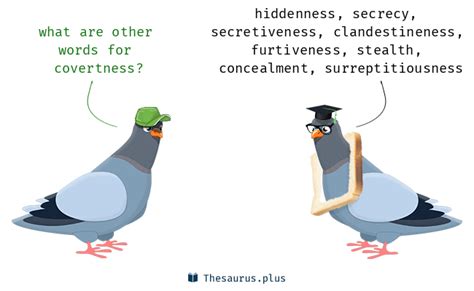Covert operations, by their very nature, are designed to remain hidden from public view, making the concept of covertness a critical component in the realm of espionage, military strategy, and intelligence gathering. The essence of covertness lies in its ability to conceal the true intentions, identities, and activities of those involved, thereby protecting sensitive information and preventing adversaries from gaining valuable insights. This article delves into the intricacies of covertness, exploring its historical context, methodologies, and the challenges it poses in an increasingly transparent and interconnected world.
Historical Context and Evolution of Covertness

The practice of covertness has been a staple of military and intelligence operations for centuries, with early examples including the use of spies, sabotage, and subterfuge. As global politics and technologies have evolved, so too have the methods and motivations behind covert activities. From the clandestine operations of World War II to the sophisticated cyber espionage of the 21st century, covertness has played a pivotal role in shaping international relations and conflict outcomes. The adoption of covert tactics has been particularly notable in asymmetric warfare, where non-state actors and weaker nations seek to counter the conventional military superiority of their opponents through unconventional means.
Methodologies of Covertness
Covert operations employ a range of methodologies to achieve their objectives while minimizing detection. These include human intelligence (HUMINT), where agents infiltrate organizations or gather information through interpersonal contacts; signals intelligence (SIGINT), involving the interception and analysis of communications; and open-source intelligence (OSINT), which leverages publicly available information to inform operations. The use of cover identities, secure communication channels, and encrypted data storage are also crucial in maintaining the secrecy of covert activities. Furthermore, the psychological aspect of covertness, including the manipulation of perceptions and the creation of plausible deniability, plays a significant role in the success of such operations.
| Intelligence Discipline | Description |
|---|---|
| HUMINT | Human Intelligence: Information gathered from human sources. |
| SIGINT | Signals Intelligence: Intercepted communications and electronic signals. |
| OSINT | Open-Source Intelligence: Information collected from publicly available sources. |

Key Points
- The concept of covertness is fundamental to covert operations, aiming to conceal true intentions and identities.
- Historically, covertness has been a critical component of military and intelligence strategies, evolving with technological advancements.
- Methodologies of covertness include HUMINT, SIGINT, and OSINT, each with its unique challenges and applications.
- The psychological aspect of covertness, including manipulation and plausible deniability, is crucial for operational success.
- Continuous innovation and adaptability are essential in the field of covertness due to the dynamic nature of global politics and technology.
Challenges and Future Directions

The maintenance of covertness in the modern era is fraught with challenges, not least of which is the pervasive nature of digital technology and social media. The leakage of sensitive information through unsecured channels or the actions of rogue actors can compromise even the most carefully planned covert operations. Furthermore, the international legal framework governing espionage and covert activities is often murky, leading to ethical dilemmas and potential repercussions for nations and individuals involved. As the world becomes increasingly interconnected, the future of covertness will likely involve more sophisticated technologies and strategies to both conduct and counter covert operations.
Technological Advances and Countermeasures
The development of advanced technologies, such as artificial intelligence (AI) and cybersecurity tools, is set to significantly impact the field of covertness. While these technologies can enhance the capabilities of covert operations, they also introduce new vulnerabilities and avenues for detection. The cat-and-mouse game between those conducting covert operations and those seeking to uncover them will continue to drive innovation and investment in this area. Moreover, the ethical considerations surrounding the use of such technologies in covert contexts will become increasingly pertinent, necessitating a nuanced understanding of their implications.
What are the primary challenges to maintaining covertness in covert operations?
+The primary challenges include the leakage of sensitive information through digital means, the ethical and legal complexities of conducting covert activities, and the evolving nature of technologies that can both facilitate and detect covert operations.
How do advancements in technology impact the field of covertness?
+Technological advancements can both enhance the effectiveness of covert operations, through improved intelligence gathering and communication security, and increase the risk of detection, as adversaries also leverage technology to uncover and counter covert activities.
What role does international law play in governing covert operations and the concept of covertness?
+International law provides a framework that outlines the legal boundaries and potential consequences of engaging in covert operations. However, the application and interpretation of these laws can be complex and vary significantly between nations, leading to a challenging legal landscape for covert activities.
In conclusion, the concept of covertness remains a vital element in the conduct of covert operations, with its methodologies, challenges, and future directions intricately linked to the broader geopolitical and technological landscape. As the world continues to evolve, the art of maintaining covertness will have to adapt, incorporating new technologies and strategies while navigating the ethical and legal complexities inherent to covert activities.



